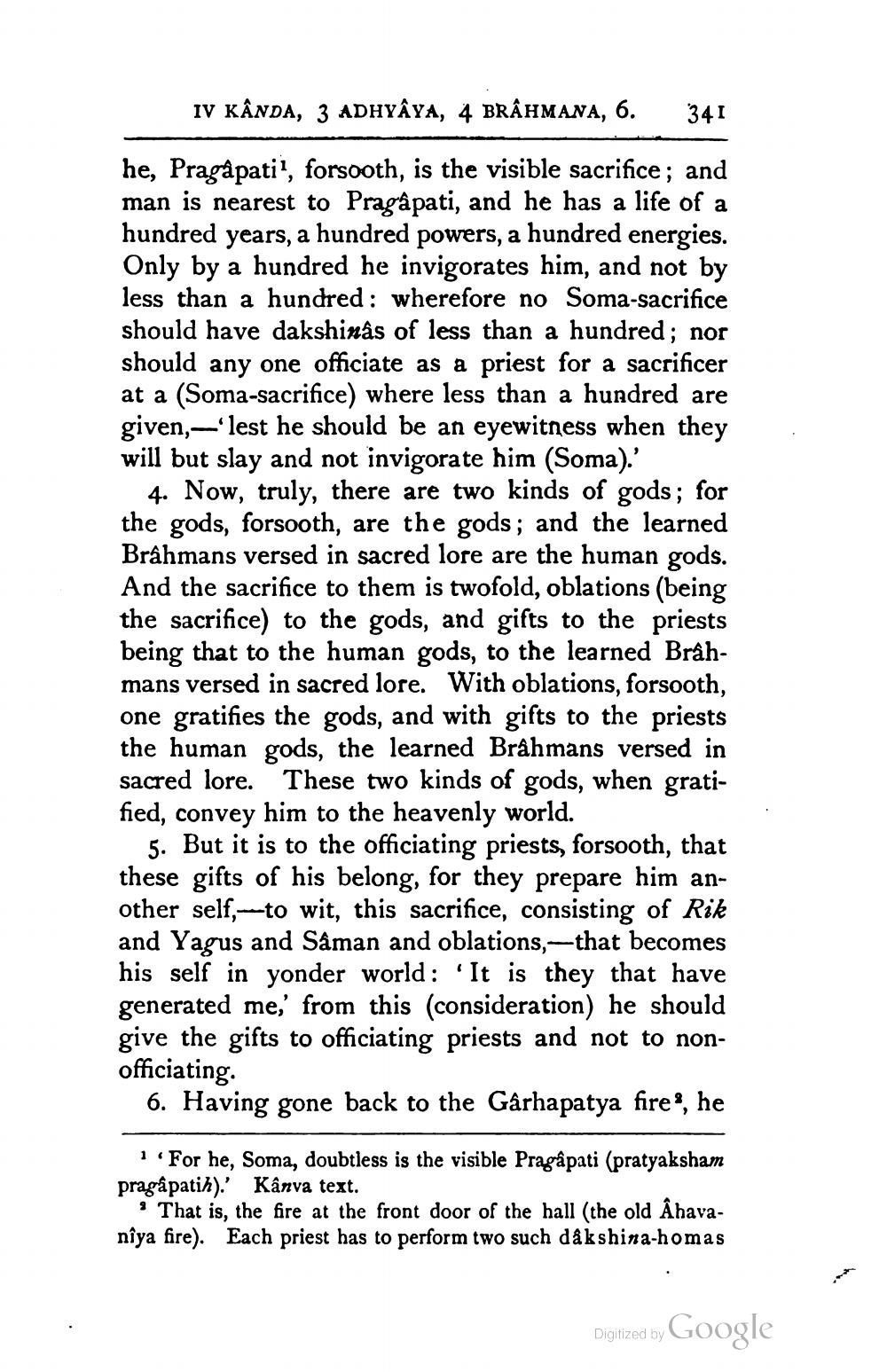________________
IV KÂNDA, 3 ADHYAYA, 4 BRÂHMANA, 6.
341
he, Pragàpatii, forsooth, is the visible sacrifice; and man is nearest to Pragâpati, and he has a life of a hundred years, a hundred powers, a hundred energies. Only by a hundred he invigorates him, and not by less than a hundred: wherefore no Soma-sacrifice should have dakshinâs of less than a hundred; nor should any one officiate as a priest for a sacrificer at a (Soma-sacrifice) where less than a hundred are given,–*lest he should be an eyewitness when they will but slay and not invigorate him (Soma).'
4. Now, truly, there are two kinds of gods; for the gods, forsooth, are the gods; and the learned Brâhmans versed in sacred lore are the human gods. And the sacrifice to them is twofold, oblations (being the sacrifice) to the gods, and gifts to the priests being that to the human gods, to the learned Brâhmans versed in sacred lore. With oblations, forsooth, one gratifies the gods, and with gifts to the priests the human gods, the learned Brahmans versed in sacred lore. These two kinds of gods, when gratified, convey him to the heavenly world.
5. But it is to the officiating priests, forsooth, that these gifts of his belong, for they prepare him another self,--to wit, this sacrifice, consisting of Rik and Yagus and Sâman and oblations,—that becomes his self in yonder world: 'It is they that have generated me,' from this (consideration) he should give the gifts to officiating priests and not to nonofficiating.
6. Having gone back to the Garhapatya fires, he
1 'For he, Soma, doubtless is the visible Pragapati (pratyaksham pragâpatih).' Kanva text.
That is, the fire at the front door of the hall (the old Åhavanîya fire). Each priest has to perform two such dåkshina-homas
Digitized by Google




